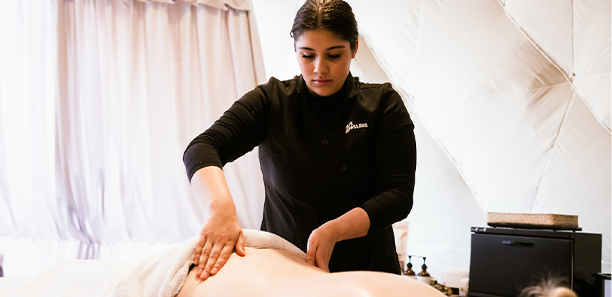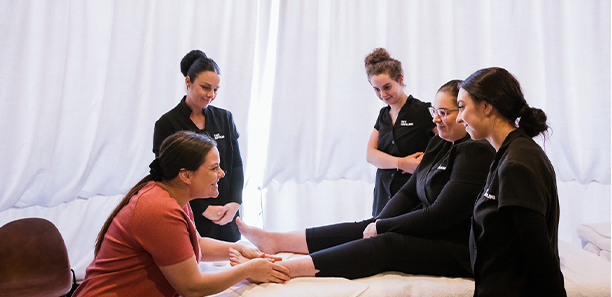Thinking of studying massage therapy but want to know where your career could take you? Whether you want to be a massage therapist, remedial massage therapist or myotherapist, there are all sorts of career pathways you can take. Let’s take a look at your top options…

If you’re interested in healthcare but you aren’t sure which career is right for you, let’s start by comparing remedial massage, myotherapy, kinesiology, physiotherapy and osteopathy.
Myotherapy
Myotherapy is the assessment, treatment and management of musculoskeletal conditions, focusing on massage as the main tool. Patients with muscular dysfunction and pain that affects their mobility can benefit from this therapy style as massage helps to release the problem areas. Myotherapy also utilises techniques such as dry needling, trigger point therapy and myofascial release.
To work as a myotherapist in private practice, you must have an Advanced Diploma of Remedial Massage or a Bachelor of Health Science degree, majoring in Myotherapy.
Osteopathy
Osteopathy recognises the important link between the structure of the body and how well it can function. Osteopaths focus on how the skeleton, joints, nerves, circulation, tissues and organs work together as a holistic unit. As an osteopath, you learn to identify the source of dysfunction in the body using skilled evaluation and diagnosis techniques.
Physiotherapy
Physiotherapists treat patients who suffer from physical ailments and musculoskeletal disorders caused by injury, disease, illness and ageing. These professionals aim to improve their patients’ quality of life by alleviating pain and restoring function to the body.
To become a physiotherapist, you will need a four-year undergraduate degree with further study into areas of specialisation. Like osteopathy, physiotherapists are required to continue their professional development each year.
Kinesiology
Kinesiology is another holistic approach to improving the function of the body through muscle monitoring. Kinesiology is a non-invasive technique which combines western and eastern medicine to promote physical, mental, emotional and spiritual health, focusing on the body’s ability to heal itself and restore balance through the flow of energy.
To become a kinesiologist, you will need a bachelor’s degree or a masters in Kinesiology or a related field, including human kinetics, exercise science of exercise physiology.
Remedial massage
Remedial massage focuses exclusively on manipulating the superficial and deeper layers of muscle and the connective tissues. The goal of remedial massage is to enhance the function of the body, release muscular tension, promote relaxation and aid in the healing process.
Remedial massage can help to:
- Enhance performance in sport
- Reduce recovery times
- Increase the range of motion
- Facilitate lymphatic drainage
What’s the job outlook like for massage therapy?
According to the government’s JobOutlook website, massage therapy is expected to have ‘very strong growth’ in the next five years.
In 2020, there were 18,900 massage therapists. That’s likely to reach 21,800 by 2025.
TAFE qualifications that will get you there
Our Diploma of Remedial Massage will give you the knowledge and skills required to work in this industry. It can also work as a steppingstone into physiotherapy, kinesiology, myotherapy and osteopathy, making it a great place to begin when you aren’t sure which aspect of the healthcare industry is calling to you.

If you aren’t certain about your future career and the concept of a four-year university degree is daunting, a TAFE qualification will open pathways you never imagined.
Find out more by calling 1300 475 146 or contacting us online.